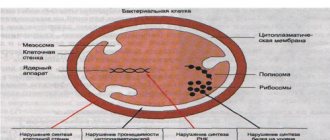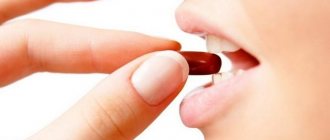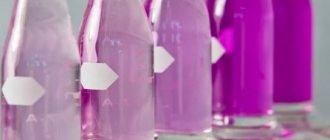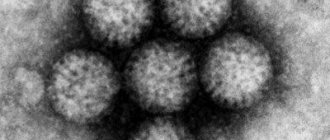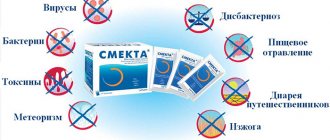Why do you feel sick and vomit?
- Immune reactions - during pregnancy lead to nausea in the 1st trimester
- Irritation of the vagus nerve - bacteria, viruses, protein breakdown products during tumor processes and inflammation of the gastrointestinal tract causes nausea
- Nausea of central origin - associated with irritation of the vomiting center in the brain, occurs: with an increase in blood pressure against the background of hypertension or vegetative-vascular crises
- with intracranial hypertension or meningeal irritation
- for diseases of the inner ear
- with irritation of the semicircular tubules due to motion sickness
The causes of vomiting can be divided as follows:
- Infections: viral (hepatitis, entroviruses), bacterial (toxins of staphylococci, Salmorella, Escherichia coli, Bacillus cereus, Vibrio cholerae, Clostridia, Yersinia).
- Toxic influences: poisons or alcohol, medications (drugs, cytostatics, aminophylline, cardiac glycosides).
- Severe abdominal pain (peritoneal inflammation, pancreatitis, cholecystitis, acute myocardial infarction).
- Narrowing or obstruction of the gastric outlet (cicatricial stenosis, tumors).
- Intestinal obstruction (intussusception, Crohn's disease, tumor, foreign body).
- Central vomiting (increased intracranial pressure, neuroinfection, lesions of the vestibular apparatus in Meniere's disease or its irritation during motion sickness).
- Metabolic and endocrine causes (hyperthyroidism, Addison's disease)
- Pregnancy
- Radiation sickness
Serotonin receptor antagonists
Riabal
They block the transmission of nerve impulses in the parts of the brain responsible for the gag reflex. Medicines are used for severe nausea and vomiting caused by chemotherapy or other strong factors.
Tropisetron
The drug blocks the gag reflex caused by taking chemotherapeutic anticancer drugs for 24 hours. Unlike analogues, it does not lead to kinetic disorders - hand tremors, loss of coordination. Due to the high activity of the anti-vomiting drug, it can be taken only once a day.
The drug is available in the form of capsules and solution for injection in ampoules. It is used in courses of 6 days. On the first day of the course, Tropisetron is administered intravenously using a dropper, and capsules are prescribed for the next 5 days.
Daily dose – 5 mg. Contraindications include pregnancy and individual intolerance to the components.
Antiemetic drugs - list
Nausea is characterized by a painful sensation in the epigastric region, chest, and oral cavity. Often, nausea precedes vomiting - a protective reflex of the body, through which, regardless of the will of a person, contents are evacuated from the digestive tract. These symptoms can appear not only with a particular disease, but also be side effects in response to treatment with certain medications. Vomiting often occurs as a result of overexcitation of the labyrinthine apparatus.
To understand which medications help with vomiting and how they should act, you need to know what the mechanism of vomiting is. This reflex is formed through the following links:
- chemical and mechanical irritation of receptors in the mucous membrane of the root of the tongue, pharynx, stomach, intestines;
- the occurrence of a nerve impulse that is transmitted along nerve fibers to the vomiting center in the medulla oblongata;
- processing incoming information and transmitting impulses to the “executive” organs - the muscles of the stomach, intestines, diaphragm, abdominal walls.
In addition, the described mechanism is inextricably linked with the vestibular apparatus, visual and olfactory analyzers, and the limbic brain system. Thus, vomiting often occurs as a result of overexcitation of the labyrinthine apparatus. With this in mind, effective antiemetic drugs must act on the vomiting center and vestibular structures. Also, when selecting a medicine, the type and causes of vomiting are taken into account. Let's look at the main groups of medications for vomiting and nausea.
Serotonin is a biologically active substance responsible for the transmission of nerve impulses and plays the role of a cellular mediator of inflammation. If its concentration is exceeded, nausea and vomiting occur. Drugs in this group block serotonin receptors, thereby preventing the onset of vomiting (while the release of serotonin remains at the same level).
Serotonin 5-HT3 receptor antagonists are mainly prescribed to patients undergoing chemotherapy courses during the treatment of tumor diseases. This group includes the following drugs:
- Ondansetron;
- Droperidol
- Granisetron;
- Cerucal;
- Olanzapine;
- Aminazine;
- Prochlorperazine;
- Metoclopramide.
Histamine is a hormone produced in the body that is a mediator of inflammation. Although antihistamines are primarily used against allergic reactions, they can also suppress vomiting by eliminating histamine effects. These drugs block the H1 receptors of the chemoreceptor trigger zone and the vestibular analyzer, which is responsible for the perception of body position. Only first generation antihistamines can be used as a cure for nausea and vomiting.
The neurotransmitter dopamine plays a role in the act of implementing the gag reflex when acting on the chemoreceptors of the trigger zone and the vomiting center. This substance increases the reflux of food from the duodenum into the stomach and from the stomach into the esophagus. Anti-nausea and vomiting tablets from the dopamine antagonist group can act through two mechanisms:
- prokinetic – contribute to strengthening normal motility of the digestive tract;
- central - block the vomiting center in the medulla oblongata.
Anti-vomiting medicine of this group is applicable for symptoms that arise against the background of diseases and disorders of the gastrointestinal tract, in which there is a slowdown in digestion and peristalsis (gastritis, peptic ulcer, gastroesophageal reflux disease, postoperative hypokinesia, toxic infections). The group of dopamine antagonists includes the following medications:
- Thiethylperazine;
- Metoclopramide;
- Motilium;
- Raglan;
- Droperidol.
- Cerucal.
Against vomiting, anticholinergic drugs act by blocking the interaction of the neurotransmitter acetylcholine and cholinergic receptors (muscarinic receptors and receptors of the vomiting center), thereby increasing the tone of the lower esophageal sphincter and stopping the gag reflex. In addition, these medications help eliminate painful muscle spasms of the digestive organs, have a sedative and hypnotic effect, thereby helping to prevent repeated vomiting. The most common antiemetic drugs from this group:
- Atropine;
- Metacin;
- Scopolamine;
- Stelabid.
Indications
Indications for prescribing the drug are:
- Nausea of various origins.
- Violation of gastric tone, as well as the functioning of the intestines and bile ducts.
- Accelerating the process of food passing through the gastrointestinal tract and increasing peristalsis before probing and x-ray examination.
The drug is contraindicated for use in the following conditions and diseases:
- Individual intolerance.
- Prolactin-dependent neoplasms, including pheochromocytoma.
- Volvulus.
- The child is under two years old.
- Gestation and breastfeeding period.
- Epileptic and other lesions of the central nervous system.
The dosage should be selected depending on the diagnosis. The Cerucal solution can be administered either intravenously or intramuscularly when feeling nauseous. What to drink at home?
Tablets for motion sickness and nausea
Not everyone can adapt to motion sickness or seasickness. In order to better tolerate different types of transport, many different medications have been developed.
Aeron - help inhibit the influence of the vagus and splanchnic nerves, responsible for nausea, vomiting, and salivation. Aeron is used from a mixture of camphor salts of hyoscyamine and scopolamine. The drug begins to act after half an hour and is active for 6 hours. May cause dry mouth, vision problems, and palpitations.
Diazepam, Seduxen, Relanium, Lorazepam, Rudotel, Prazepam - remove the feeling of fear and suppress nausea and vomiting (see tranquilizers and antidepressants).
Histamine enhances the transmission of nerve irritation from the receptors of the semicircular tubules of the inner ear (responsible for balance) to the centers of the autonomic nervous system. Blockade of these receptors reduces nausea and vomiting (Bonin, Pipolfen, Betagistin, Dimenhydrinate, etc.)
Pipolfen650-800 rub. Promethazine hydrochloride acts after 20 minutes for 6-12 hours. Indications: allergic reactions, nausea, vomiting during motion sickness, sedative after surgery. Contraindications: pregnancy, lactation, sleep apnea, simultaneous use of MAO inhibitors, children under 6 years (for the table), up to 2 months (with parenteral administration), angle-closure glaucoma, intoxication with sleeping pills, alcohol intoxication. Application: For the prevention and treatment of vomiting and nausea, intramuscular injection or orally in a dose of 25 mg once, for motion sickness, 25 mg an hour before the trip, the next hour 8-12 hours. Side effects: drowsiness, impaired visual acuity, psychomotor agitation, disorientation, confusion, dizziness, tachycardia, decreased blood pressure, dry mouth, nose, pharynx, cholestasis, tinnitus, dermatitis, urticaria, sun allergy (photosensitization), increased sweating |
BetagistineBetaver 140-200 rub. Betagistan 30-50 rubles, Vestibo 200-300 rubles. Tagista 100-120 rubles, Betaserc 500-600 rubles, Betahistine hydrochloride, Betacentrin, Betanorm, Vesical, Vasoserc, Microser, Denoise. Betahistine is similar in composition to histamine. Improves blood supply to the labyrinth of the inner ear, reducing pressure in the semicircular tubules. Indications: labyrinthine disorders - nausea, vomiting, dizziness, pain and tinnitus, Meniere's disease. Contraindications: The drug is not suitable for persons under 18 years of age or pregnant women. With peptic ulcers, caution is required. Application: You should start taking it a couple of days before the trip, half a tablet three times a day. Side effects: allergies and bowel disorders may develop. |
DimenhydrinateDramamine 100-150 rub. 5 and 10 tablets, Ciel, Aviamarin. Calms nausea, prevents vomiting, reduces dizziness. It works within 15-30 minutes of administration. The action lasts approximately 6 hours. Indications: Meniere's disease, sea and air sickness, labyrinthine and vestibular disorders (vomiting, nausea, dizziness), except for symptoms during antitumor treatment. Contraindications: pregnancy, lactation, children under one year old, acute dermatoses, epilepsy, hypersensitivity. Application: 1-2 tablets. 2-3 times a day for adults and children over 12 years old, from 1-6 years old 2-3 times a day for 1/2 or 1/4 tablets, 7-12 years old - 1-1/2 tablets. 2-3 r/day. Take 1-2 tablets before meals to prevent motion sickness. half an hour before the trip. Side effects: drowsiness, headache, weakness, dizziness, insomnia, anxiety, decreased appetite, dry mouth, nausea, vomiting, dry nose, tachycardia, decreased blood pressure, rash, dermatitis, Quincke's edema, bronchospasm, difficulty urinating, hemolytic anemia . |
Air-seaIndications: for the treatment and prevention of seasickness and motion sickness in transport, reduces vomiting, nausea, sweating, dizziness. Contraindications: The drug is approved for children over six years of age. Pregnant and breastfeeding women should consult a doctor before use. Application: start taking one hour before the trip and re-take every half hour of the trip. Side effects: not identified |
VertigohelIndications: Dizziness of various origins, motion sickness in transport. Contraindications: pregnancy, lactation, children under 12 years old (for the table up to 4 years old), liver disease, alcoholism. Dosage:
|
If you had to deal with an intestinal or toxic infection, then the first-line drugs for nausea and vomiting will be drugs that kill pathogens, slow down their growth and bind toxins in the intestines.
- Nitrofurans - furazolidone and nifuroxazide (Ersefuril, Enterofuril, Stop-diar) have the same effect. Therefore, in adults without concomitant diseases of the pancreas, you can use very cheap furazolidone (2 tablets 3 times a day for 5-7 days). It is great for vomiting and diarrhea. It is not advisable to take the medicine for more than 10 days. The choice in favor of nifuroxazide is justified in pediatric practice (suspension form and less effect on the pancreas).
- Antibiotics - ciprofloxacin, an antibiotic from a number of cephalosporins and the macrolide Azithromycin (Sumamed) can also be used for a number of intestinal infections.
Anti-vomiting drugs for diseases of the gastrointestinal tract are divided into the following groups: Metoclopramide (Cerucal), Dismenhydrinate (Dedalon, Dramamine), Prifinium Bromide (Riabal, No-Spazm), Hyoscyamine Butylbromide (Buscopan), Domperidone (Motilium).
Metoclopramide - Cerucal
Blockers of central and peripheral dopamine receptors (prokinetics) Cerucal (Metoclopramide) reduce the motor activity of the outlet of the stomach and duodenum, and prevent the backflow of intestinal contents into the stomach (with vomiting of bile). Indications: Effective for infectious and inflammatory changes in the stomach and intestines, as well as after abdominal surgery. Use tablets and intramuscular injections. For hiccups, vomiting, nausea of various origins, for diabetic gastroparesis. Contraindications: 1st trimester of pregnancy, epilepsy, pheochromocytoma, children under 14 years of age, prolactin-dependent tumor, gastrointestinal bleeding, intestinal obstruction, gastric perforation, with caution in the 2nd-3rd trimester of pregnancy, bronchial asthma, old age, arterial hypertension. Dosage: half an hour before meals, 1 tablet 3-4 times a day for adults, children over 14 years old, 1/2 tablet 2-3 times a day. Side effects: dizziness, depression, tinnitus, drowsiness, fear; in older people and adolescents, tremors, muscle twitching, tachycardia, diarrhea, constipation, dry mouth, menstrual irregularities, etc. may occur. |
Hyoscyamine butyl bromide - Buscopan
M-cholinergic receptor blockers relieve spasm of smooth muscles of the stomach and duodenum. Indications: renal, intestinal, biliary colic, in complex therapy of gastric and duodenal ulcers, algodismenorrhea, pylorospasm, biliary dyskinesia. Contraindications: children under 6 years of age, megacolon, myasthenia gravis. Application: 10-20 mg 3 times a day or in suppositories, used in adults and children over 6 years of age. Side effects: tachycardia, dry mouth, urinary retention, allergic reactions, anaphylaxis with episodes of difficulty breathing. |
Domperidone - Motilium
Indications: dyspeptic symptoms - belching, flatulence, vomiting, nausea, heartburn, bloating, vomiting of infectious, organic, functional origin. Contraindications: weight less than 35 kg, gastrointestinal bleeding, pituitary tumor (prolactinoma), simultaneous use with erythromycin, ketoconazole, etc. Application: 2-3-4 times a day are used in adults and children whose weight exceeds 35 kg. Side effects: gastrointestinal disorders, headache, convulsions, drowsiness, nervousness, anaphylactic shock, urticaria, Quincke's edema, itching, rash. |
Tablets for nausea in a child should only be prescribed by a doctor. Very often, immediately after nausea, the child begins to vomit, which threatens dehydration literally in a short time. Therefore, in relation to children, the tactics of parents’ behavior in case of sudden vomiting should be as follows.
- Calling an ambulance. If a child has an acute surgical pathology (intussusception, pyloric stenosis, appendicitis), or a traumatic brain injury, or signs of irritation of the meninges, or an intestinal infection (for children under one year old), immediate hospitalization is required.
- If a child is over a year old and has a mild intestinal infection without prolonged vomiting, he is examined by a pediatrician who prescribes nitrofuran or an antibiotic for seven days. If stool culture has been performed and the causative agent of the infection has been identified, a bacteriophage may be prescribed.
- At the same time, water and minerals lost through vomiting are restored with solutions of Hydrovit, Regidron and 5% glucose in a ratio of 2 to 1. During the first six hours, you should drink 100 ml of liquid per kg of weight (a teaspoon every 5-10 minutes), then continue drinking 100 ml per kg of weight per day.
- A child can be given Cerucal (Metoclopramide) in a tablet if he is over 6 years old. For young children, the drug is administered intramuscularly (1-2 ml).
- Motilium in suspension 0.25-0.5 ml per kg of body weight 3-4 times a day.
For vomiting of central origin (most often caused by intracranial hypertension), children are given magnesium sulfate intramuscularly, Diacarb is given, or Dexamethasone is administered.
In children under one year of age, the cause of fountain vomiting (see causes of regurgitation in infants) may be a narrowing of the outlet of the stomach (pylorospasm) or its congenital closure (pylorostenosis). Stenosis can only be treated surgically, but spasm can be eliminated by administering belladonna or Atropine.
Drugs, cytostatics, aminophylline, cardiac glycosides provoke damage to the gastrointestinal tract (liver, pancreas, stomach) and irritate the vomiting center.
- Medicine for vomiting in case of poisoning with morphine derivatives - Cerucal.
- Cytostatic therapy requires parallel administration of serotonin receptor blockers. Tropisetron 5 mg per day intravenously on the day of administration of the cytostatic, then in the same dosage in tablets in adults and 0.2 mg per kg of weight in children. Gransetron 3 mg per day intravenously along with a cytostatic agent, then 3 mg per day orally. Ondansetron 8 mg intravenously three times a day as a cytostatic drug, then 8 mg 3 times a day orally.
- In case of poisoning with Eufillin, large doses of potassium chloride and a solution of Thiamine chloride are administered intravenously.
- In case of an overdose of cardiac glycosides, vomiting is accompanied by agitation. To eliminate it, inject 1 ml of a 2.5% solution of Diprazine and 1 ml of 1% Promedol or Droperidol in a volume of 2 ml of a 0.25% solution or Aminazine 2 ml of a 2.5% solution.
Preparations of the nitrofuran group
These medications are used for diseases of the gastrointestinal tract, intestinal and toxic infections. They suppress the growth of pathogens, destroy pathogenic microorganisms, bind and remove toxic products of their vital activity.
Enterofuril
Medicine for nausea and vomiting is an antimicrobial drug, but is not an antibiotic. It suppresses the activity of most types of pathogens of intestinal infections, therefore it is recommended in the presence of symptoms of acute intestinal infections - diarrhea, nausea, vomiting, fever, dizziness and weakness. The product is used after consultation with a doctor, as a prevention of dehydration.
It is recommended that children from one to seven years old be given an anti-vomiting drug in the form of a suspension, 100–200 mg three times a day. The dosage is calculated taking into account the age of the child. Adults and children over 7 years of age are prescribed 200 mg of the drug in capsules, 4 times a day.
The list of contraindications includes children under one month of age and individual intolerance to the components. Can be used during pregnancy with a doctor's permission.
Stopdiar
Antimicrobial agent based on nifuroxazide. Available in the form of tablets and suspensions for the treatment of gastrointestinal infections accompanied by diarrhea, nausea, vomiting and other specific symptoms.
Stopdiar tablets are contraindicated for the treatment of children under seven years of age, as well as for those with individual intolerance to nifuroxazide. During the period of bearing a child and breastfeeding, the use of the product is possible according to the doctor’s decision.
The drug is taken 2 tablets 4 times a day with a small amount of liquid. At least 6 hours should pass between doses.
The most effective antiemetic drugs
Due to the fact that each antiemetic agent acts according to a specific mechanism, in each specific case the drug is selected taking into account the causative factors. The most common form of release of such drugs is anti-vomiting tablets, but oral administration is not always possible if the vomiting is severe, repeated, or the symptoms are associated with a stroke, reflux esophagitis, or accompanied by intestinal obstruction. Then it is more rational to give an antiemetic injection - intramuscular or intravenous.
Here are the names of effective antiemetic drugs in different dosage forms that help with various types of nausea and vomiting:
- Motilium (active ingredient - domperidone) is a dopamine antagonist, used for minor vomiting and nausea, often in chronic diseases of the esophagus, intestines and stomach. Available in the form of oral and lingual tablets, suspension for oral administration.
- Cerucal (metoclopramide) is a central blocker of dopamine receptors, a basic agent with a long history of use. Can be used for patients undergoing chemotherapy or radiotherapy, after surgery, and for migraine attacks. It comes in tablet and injection forms.
- Zofran (ondansentron) is a modern drug that belongs to the group of serotonin receptor antagonists. It is mainly prescribed as a concomitant treatment for chemotherapy and radiation therapy. Available in the form of tablets for swallowing and resorption, in the form of syrup.
- Dramamine (dimenhydrinate) is a popular drug for sea and air sickness, motion sickness, systemic vertigo, vestibular neuronitis, Meniere's disease, and symptoms of head injuries. It belongs to the group of histamine receptor blockers. Release form: tablets.
Antiemetics for children
They need to be given special attention. Many parents are concerned about what a child can drink to prevent vomiting, since children’s stomachs and bodies are generally more susceptible than adults’.
So, here are the drugs approved for them:
- Activated carbon. Affordable and safe product. The number of tablets is dosed taking into account the child’s weight.
- White coal. Its sorption properties are higher, so it must be taken in smaller quantities.
- "Smecta". As mentioned above, even babies can use it.
- "Enterosgel". This product is produced in the form of a gel. It can also be consumed from birth. Before use, the gel is stirred in water.
- "Polyphepan". Available in the form of granules and powder. For children under 1 year of age, 1 tsp is enough. Seniors (from 1 to 7 years old) - one dessert spoon. For older children, 1 tbsp is recommended. l. powder.
- "Polysorb". A harmless drug, but the dosage is selected taking into account the child’s weight.
- "Enterodesis." A suspension is also prepared from it, taking into account the child’s body weight.
- "Filtrum STI". Available in tablet form. Before use, they must be crushed, mixed in water, and then drunk. For children under 3 years old, half a tablet is enough. For adults – 1 tablet 3-4 times a day.
But parents should not get carried away with self-medication. Taking any remedy will alleviate the child’s condition, but then it is worth taking him to the pediatrician to find out whether his nausea is a signal of the presence of some kind of illness.
It is important for parents to understand what to do if their child complains of nausea. First of all, we must not forget that the receptors of the vestibular apparatus in a child are much more sensitive to external influences, and susceptibility decreases only with age.
Remedies for nausea during pregnancy
Nausea and vomiting during pregnancy accompany the first 12 weeks and are part of the early toxicosis program. Some women may experience nausea throughout their pregnancy. Mild toxicosis (vomiting about 5 times a day or less) can be treated on an outpatient basis. Moderate degree (when vomiting up to 10 times per day) and uncontrollable vomiting of pregnant women (more than 20 vomits per day) require hospitalization.
- Kokkulin 180 rub. 30 pcs. – homeopathic lozenges.
- Bonin (meclosine hydrochloride) begins to act within an hour and is effective throughout the day, 25-50 mg per day. May increase fatigue, cause drowsiness and dry mouth. Contraindicated for children under twelve years of age.
- Splenin, an extract from the spleen of cattle, is administered 2 ml intramuscularly once a day for 10 days.
- Hofitol 300-400-700 rubles, based on artichoke leaf extract, 2 tablets dissolved in water and taken before meals three times a day.
- Herbal sedatives and herbs based on motherwort, peppermint, valerian, St. John's wort, lemon balm and calendula.
Also, vomiting and nausea in the later stages may indicate a rise in blood pressure and develop into a preeclampsia program, which threatens the life of the fetus and mother (see gestosis during pregnancy). Treatment of gestosis is carried out in the intensive care units of an obstetric hospital.
Medicines for children
Medicine for children with nausea and vomiting should not be prescribed independently. A child is much more sensitive to irritating environmental factors due to the fact that his immune system is not fully formed.
Therefore, a baby may vomit for various reasons, including:
- disruption of the gastrointestinal tract;
- presence of intestinal infection;
- problems with the central nervous system;
- problems with the vestibular system;
Antiemetic drugs - contraindications
All antiemetic tablets and injections have a considerable number of side effects and contraindications, so their use is strictly limited and must be agreed with a doctor. Each drug has an individual list of contraindications, and this is indicated in the instructions, and it should be taken into account that antiemetic drugs may be incompatible with other medications.
Most antiemetic drugs are contraindicated in:
- peptic ulcer of the duodenum and stomach;
- gastrointestinal bleeding;
- mechanical obstruction or intestinal perforation;
- severe chronic kidney and liver diseases.
Sedatives
Namely "Tenoten", "Deprim" and "Persen". What do sedatives have to do with it? And despite the fact that in people who are easily excitable and emotional, who have a hard time even with everyday troubles, the urge to vomit is of neurogenic origin. All of the above drugs will be useless. So you need to eliminate the factors that provoke discomfort.
All of the above drugs have anti-anxiety and sedative effects, and this is not accompanied by the appearance of muscle relaxant and hypnogenic effects.
And “Persen” and “Deprim” are actually herbal preparations. The first contains extracts of peppermint and lemon balm, and the second contains flavonoids.
The approximate cost of Tenoten, Deprima and Persen is 250, 230 and 350 rubles, respectively.
Anti-vomiting tablets for children
- Melissa decoction: 4 teaspoons of dry herb are crushed and placed in a thermos, filled with 2 cups of boiling water. After letting it brew for 6 hours, take a quarter glass up to 3 times a day.
- Green tea helps relieve nausea. But, it is not recommended for children, pregnant women, hypertensive patients and for cardiac arrhythmias.
- Fennel seed decoction, mint tea.
- Lollipop - if you feel nauseous due to seasickness, you can suck on a sour candy or lollipop.
- Acupuncture and acupressure are the best home remedies for nausea. After all, massage does not require any ingredients or devices. Massage points on the hand clockwise with your finger for a minute. Point 1 – on the flexor surface of the forearm between two tendons, 3 transverse fingers away from the wrist. Point 2 – 4 fingers of the left hand across the right so that the little finger touches the wrist. The middle of the forearm along the edge of the index finger is point number two.
You should always remember that nausea and vomiting are signs of many diseases and should not be underestimated. It is better to consult a doctor as soon as possible and get additional recommendations about harmless gastritis than to try to get rid of unpleasant sensations on your own and end up with severe dehydration, a heart attack, cerebral hemorrhage or tumor.
Nausea and vomiting as side effects
What medications will help relieve unpleasant symptoms that arise after chemotherapy in adults?
This issue is relevant for patients suffering from cancer. They often need medication to help with nausea and vomiting that won't interfere with their main medications.
The need for it appears due to the effect of antitumor procedures on the vomiting center. Ativan and Zofran were developed for this purpose. They must be taken according to the schedule drawn up by the attending physician. Otherwise, their effectiveness will be significantly reduced.
How to take antiemetic drugs?
Depending on the type and origin of the symptoms, the remedy for nausea and vomiting can be used once, for a short or long course, in one dosage or another. It is necessary to follow the instructions and instructions of the doctor, in no case exceeding the prescribed dose, otherwise this can lead to the development of dangerous adverse reactions. Let's get acquainted with the features of taking these medications for certain diagnoses and conditions of the body.
Such a method of treating cancer as chemotherapy, without which in many cases the fight against a terrible disease is essential, is accompanied by the development of severe nausea and vomiting. Basically, antiemetics used in chemotherapy belong to the groups of dopamine antagonists and serotonin receptor antagonists, which have a central effect on the body. Antiemetic drugs for oncology are prescribed in a course that begins before chemotherapy.
Vomiting and nausea are frequent companions during pregnancy, which not only impair vital functions, but can also pose a threat to the normal development of the fetus. Prescribed antiemetics during pregnancy may be either antihistamines or central dopamine receptor blockers.
Rotovirus infection is characterized by damage to the gastrointestinal tract, accompanied by fever, diarrhea, abdominal pain, nausea, and vomiting. The pathology requires symptomatic treatment, including the use of anti-nausea and vomiting medications to alleviate the condition. In this case, a short course of medications such as:
- Motilium;
- Cerucal;
- Motilak.
Repeated vomiting, which does not bring relief, in case of poisoning with low-quality products or toxic substances can quickly lead to severe dehydration and other complications. An antiemetic drug can be taken only after the stomach has been completely cleansed of toxic residues in parallel with detoxification therapy. Recommended drugs:
- Motilium;
- Sturgeon;
- Cerucal.
When asked what to drink for nausea and vomiting if alcohol poisoning has occurred, you can follow the previous recommendations. It is important to consider that in this case, it is also allowed to take such drugs only after the stomach has been emptied by washing it. Effective drugs that can be taken:
- Cerucal;
- Motilium;
- Metoclopramide.
"Buskopan"
When talking about what you can drink to prevent vomiting, this drug should also be mentioned. "Buscopan" is an m-cholinergic receptor blocker that reduces the secretion of the digestive glands and has an antispasmodic effect on the smooth muscles of the urinary and biliary tract, as well as the gastrointestinal tract.
It is recommended to take it if a person is overcome by vomiting bile. The action occurs 15 minutes after administration. This is a powerful drug, so it should not be used together with other antiemetics. It is prohibited to combine it with beta-agonists, antiallergic drugs and antidepressants.
The average price of tablets is 300-400 rubles per pack.
Types of anti-vomiting drugs
The gag reflex often occurs in people when impulses are sent to the motor section of the vomiting center. A certain antiperistalsis or peristaltic wave is formed in the smooth muscles, leading to spasms and toxicosis of the body as a whole. To block and minimize the strength of this wave, antagonists will help, which are prescribed to patients after surgery or chemotherapy when vomiting occurs against the background of the strong toxic effects of the prescribed drugs.
- 5-NTZ antagonists (Ondansetron, Granisetron, Olanzapine, Prochlorperazine, Droperidol, Aminazine, Motilium, Metoclopramide, Cerucal) help block serotonin receptors in the central nervous system and gastrointestinal tract, affecting the brain, and eliminate vomiting after a course of chemotherapy in the treatment of tumor diseases.
- NK-1 antagonists (Doxylamine, Promethazine, Hydroxyzine, Cannab, Doxylamine, Diphenhydramine) to affect brain receptors due to motion sickness or opioid nausea in the morning, which often occurs in pregnant women.
- Benzodiazepines, intended at the beginning of a course of chemotherapy, anesthesia or emergency care for attacks of nausea (Muscimol, Acceleration, Propofol, Metrogalalalactone, Benzamide).
Children and older people are often prescribed safer ginger-based preparations that affect the trigger and receptor zones, as well as the coordination center of the reticular function of the cerebral cortex.



